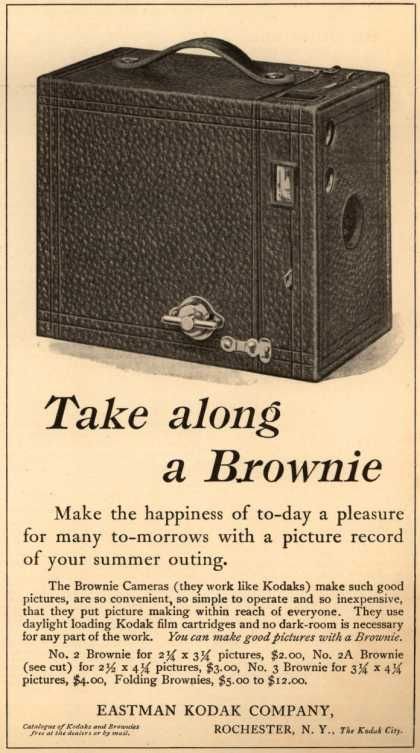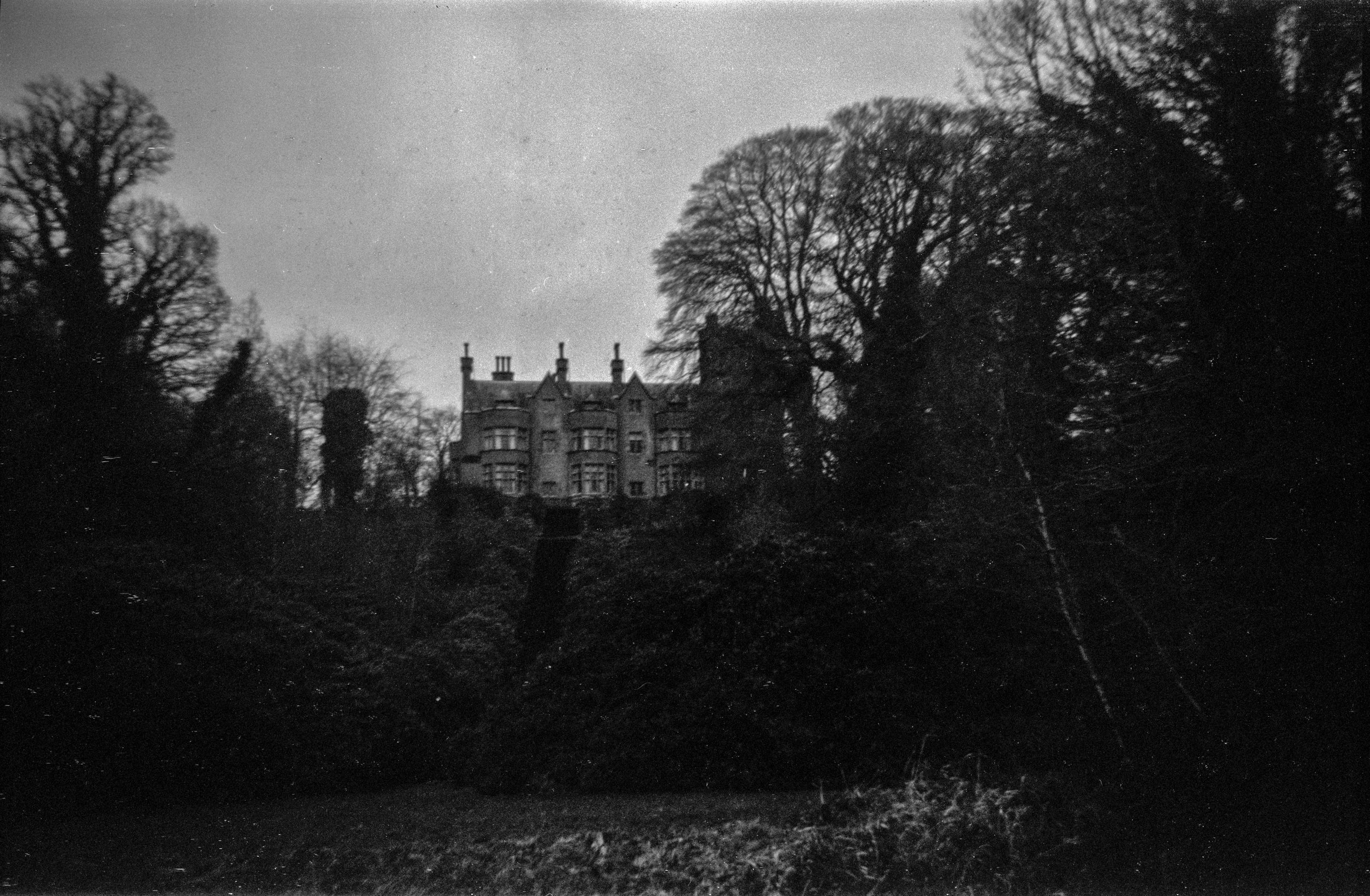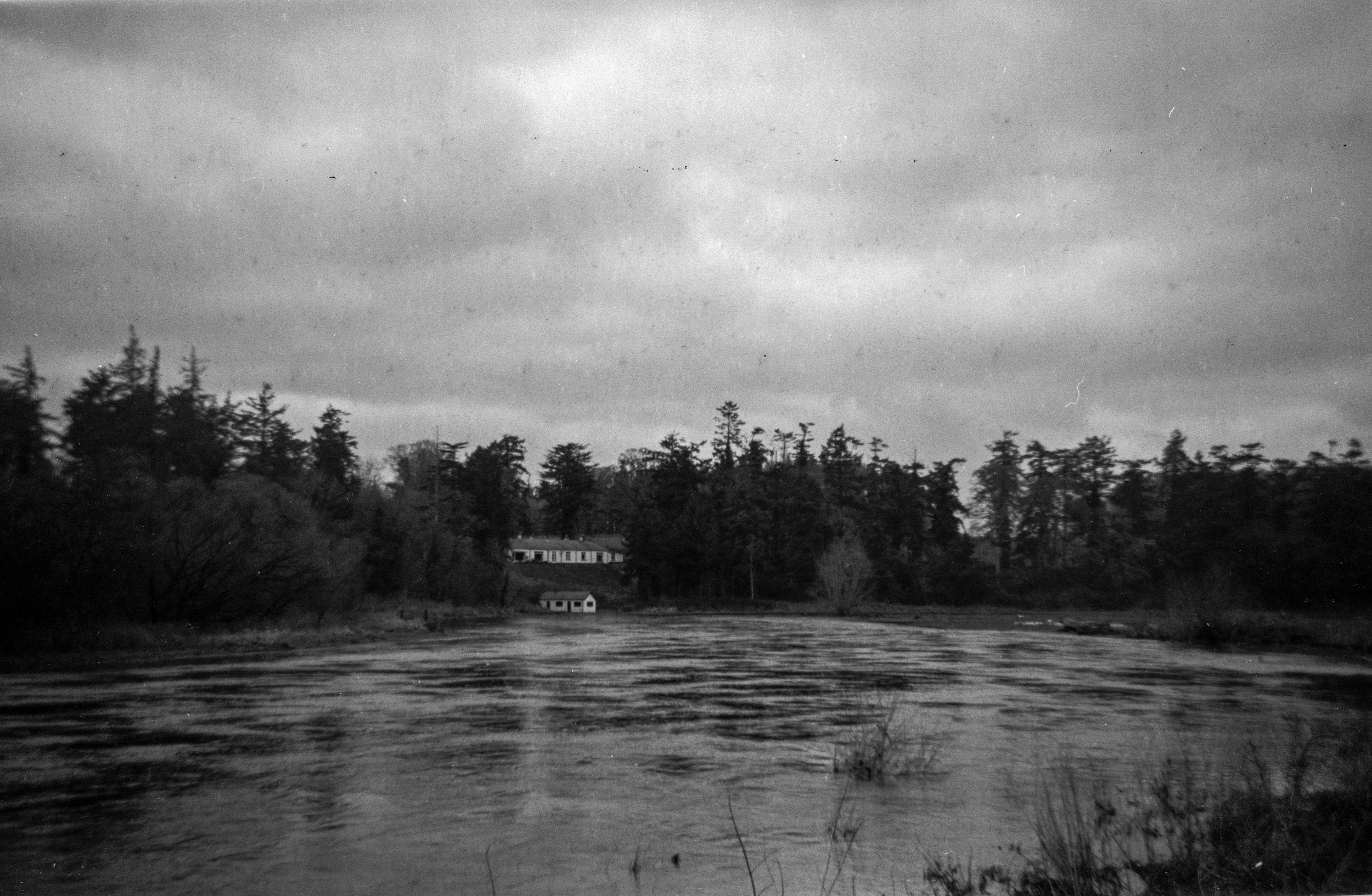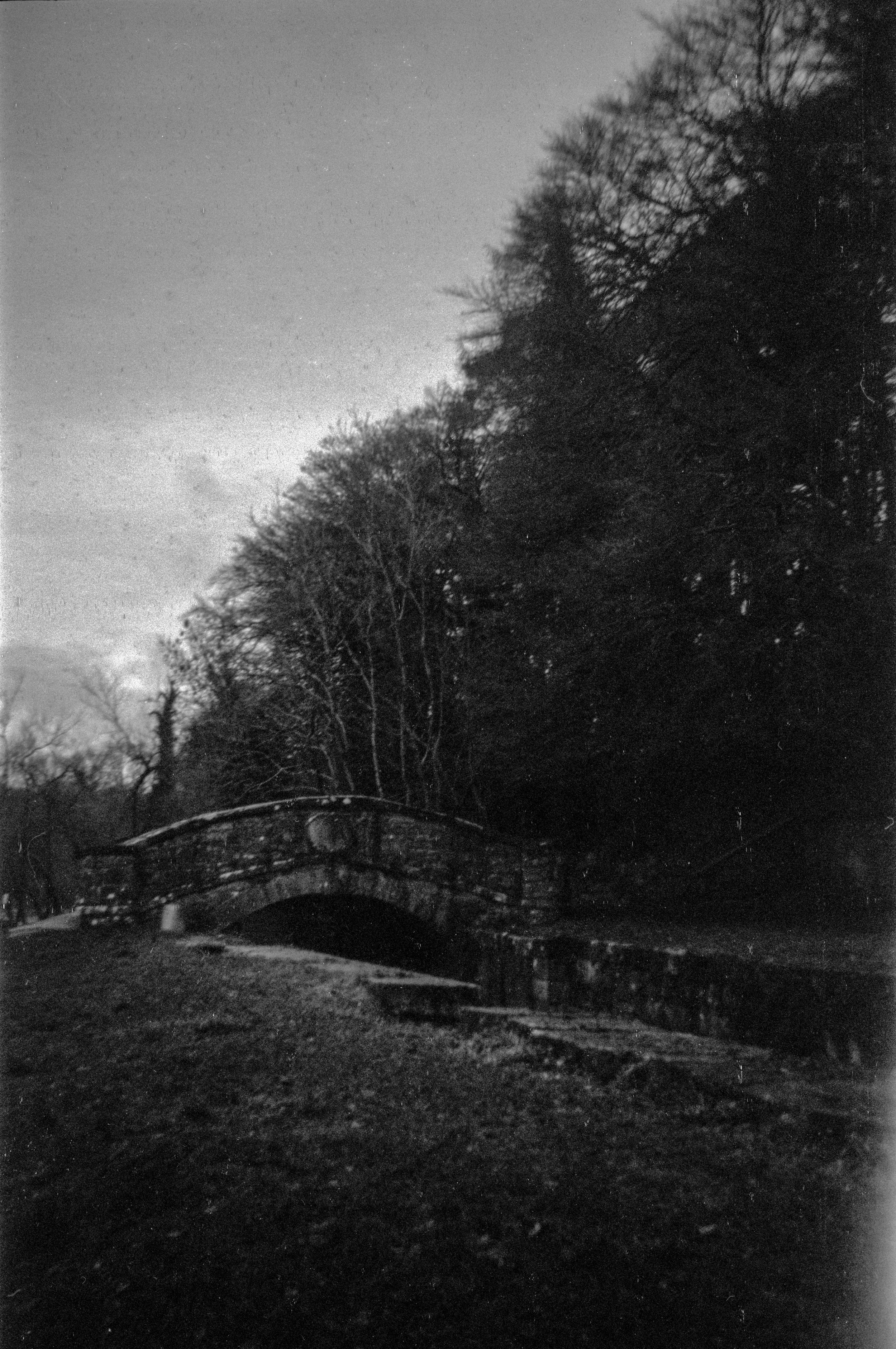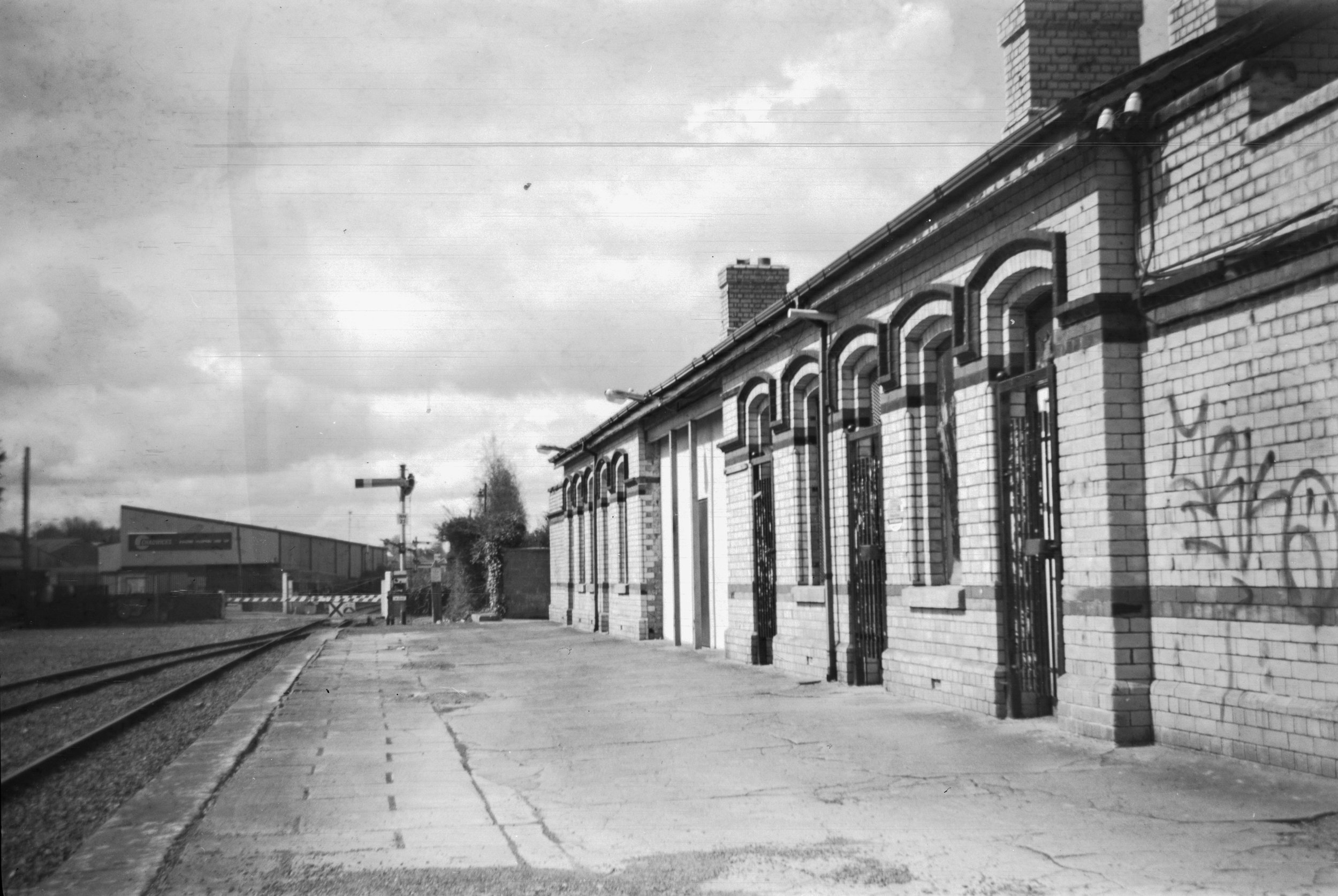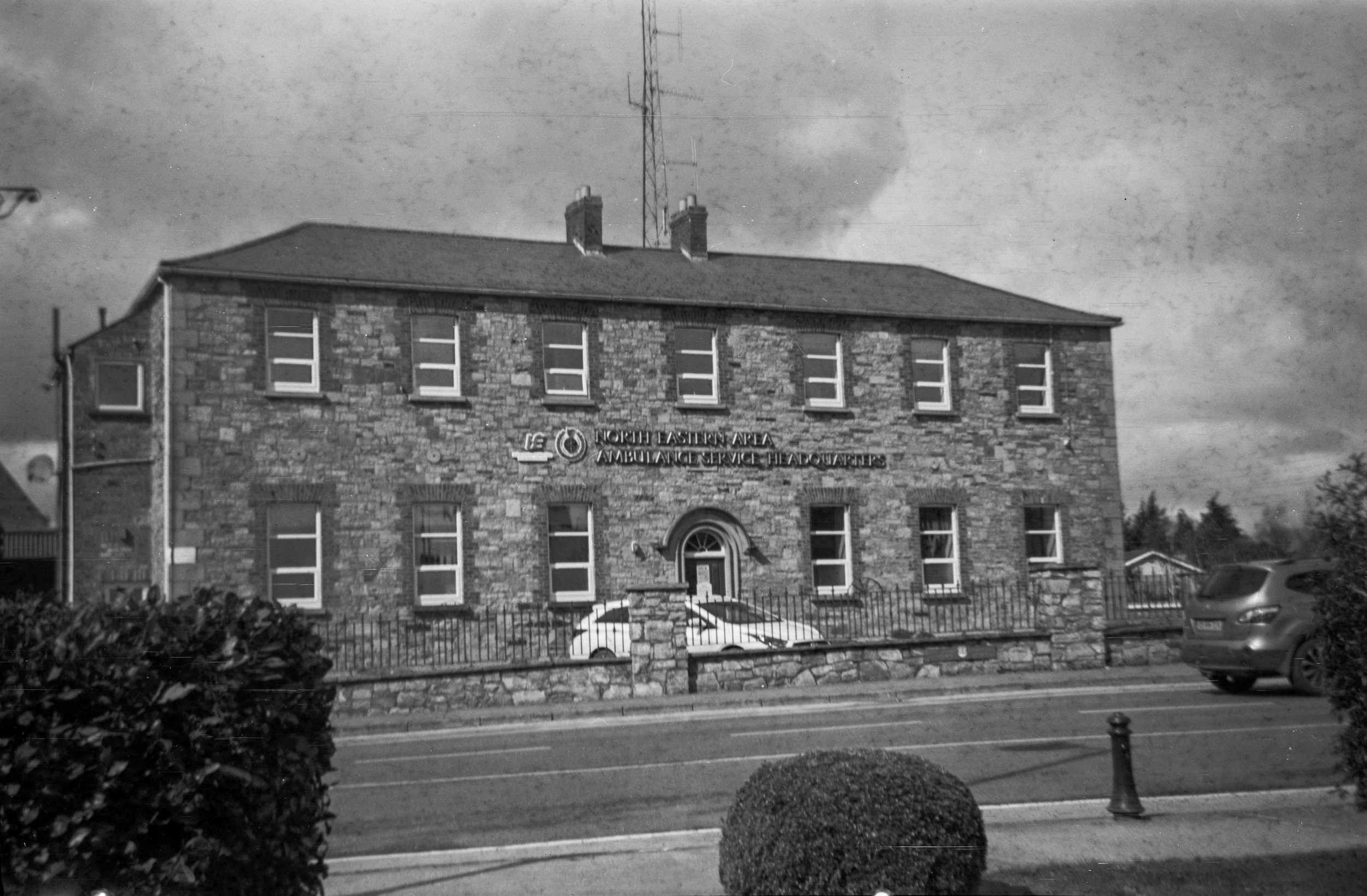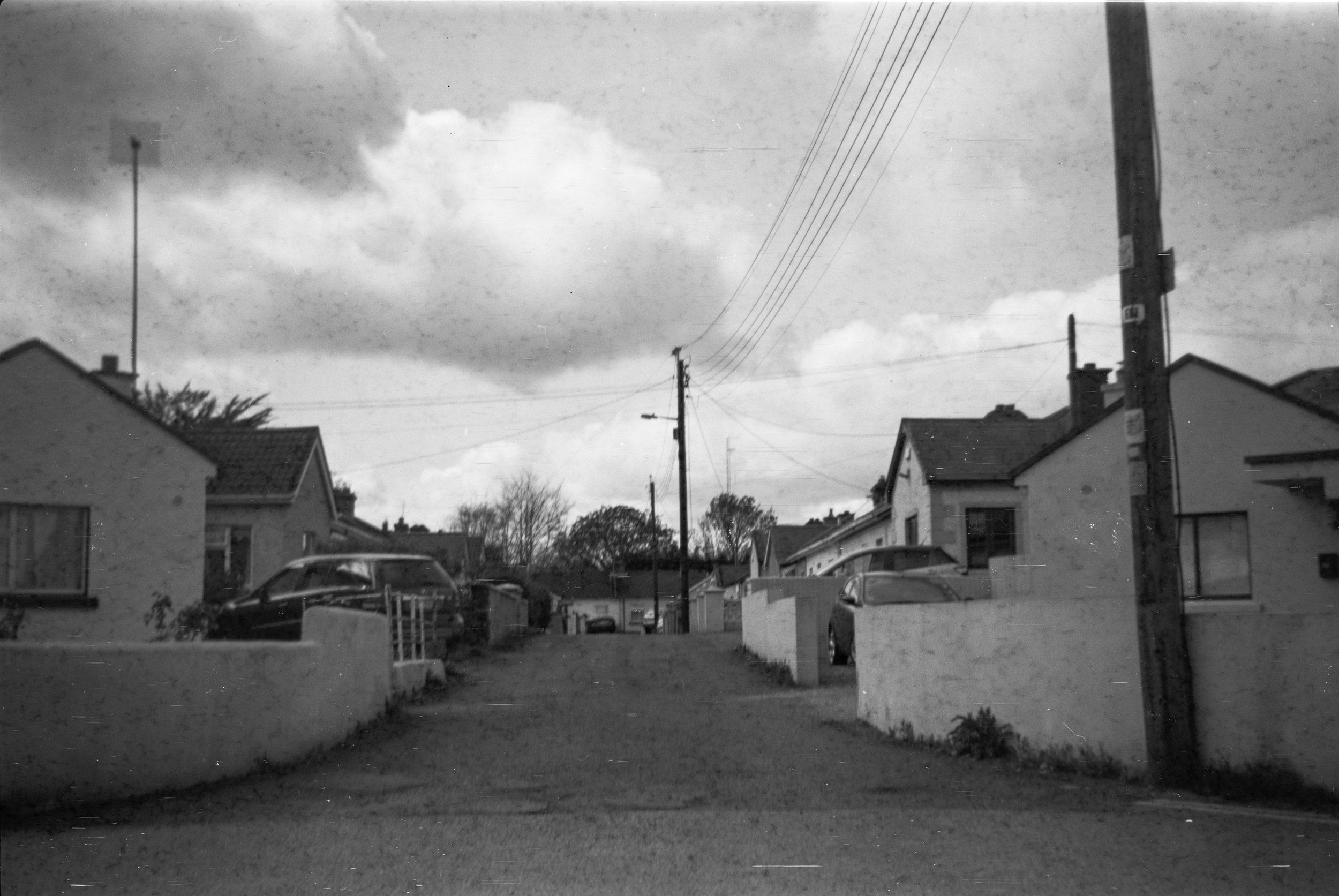Take along a Brownie: Shooting with my Six-20 Kodak Brownie Model D
The history of photography is marked by events which saw major advancements in our ability to capture images and one such instance was the invention of the Kodak camera in 1888. This simple box camera contained 100 exposures on flexible roll film which could be returned to the factory in Rochester, New York to be developed and film reloaded in the camera. This service removed the need for the camera user to have their own darkroom and made photography accessible to causal amateurs. Kodak’s marketing strategy with iconic phrases such as ‘You Press the button, We do the Rest ’ indicated that the everyday user was their targeted customer.
Early Kodak Camera Advertisement
The Kodak Brownie
George Eastman also realised that if he could reduce the cost of a camera, he could make it more accessible, particularly to children. To that end, he asked his camera designer Frank Brownell to design the least expensive camera possible. Brownell’s solution was the simple and low cost Kodak Brownie camera, first introduced in 1900. The first Kodak Brownie was a cardboard box with a simple lens and no viewfinder. It used flexible film that could take six exposures. The initial price was one dollar and the ability to load the film in daylight cemented the Brownie’s place in history as the camera that that brought snapshot photography to the masses.
No 1 Box Brownie Camera and packaging. Image from the Science Museum Group.
The Kodak Brownie name became synonymous with popular photography and Kodak’s advertisements show clearly that the Brownie was aimed at women and children. The name Brownie itself came from popular cartoon characters invented by Palmer Cox. These cute fairy-like creatures were based on Scottish folklore figures and were some of the first cartoon characters to be used for mass merchandising. The Brownie Camera Club of America for children was established and advertising campaigns contained slogans such as ‘Let the Children Kodak ’.
Early Kodak Brownie advertisement depicting the Brownie Character, c.1900
An early Brownie advertisement emphasising that picture making is for everyone.
Over the years the material used in the production of the Kodak Brownie changed from cardboard, to metal and finally moulded plastic. The simple box design remained the same until the 1950’s. I have a number of box Brownie’s in my own collection but one of my most precious is a Six-20 Brownie Model D. My version of the Model D with a plain matt enamel front, metal wind knob and black plastic release button was produced from 1946 to 1953. It was manufactured by Kodak Ltd. in Harrow, England and takes 620 roll film as indicated in the name of the camera. The single leaf shutter has a speed of 1/50s or bulb mode and the lens is an f/11 meniscus, 100m with portrait lens.
Kodak Brownie Six-20 Model 20
Kodak Brownie cameras are easy to come by and while not rare, my Six-20 Brownie Model D is special as it was passed down to me from my great aunt Breege. She originally bought the camera in 1950 for approximately one pound, which was a lot of money for her at the time. Until recently, I had not attempted to put a roll through the camera due to 620 film not being widely available. 620 film is the same size as 120 film but the spool is much thinner and narrower than that of 120 film. You can purchase rolls of 120 film that have been re-spooled onto 620 spools and you can also try this at home if you have a 620 spool available. Alternatively you can modify a 120 spool to fit into a 620 camera.
Modifying a roll of 120 film
I decided to modify a roll of 120 film to fit into the Six-20 Brownie and I will outline the process here. Supplies that are needed for this task include a scissors or nail clippers, sandpaper, a genuine 620 spool to use as the take up spool and an air blower.
120 spool versus 620 spool
The first step is to lay down some kitchen paper or newspaper as it can get dusty when you start to sand down the spools. Take the scissors or nail clippers and use it trim down the disks at the end of the spool but being careful not to trim so far down that you will expose the film to light. Don’t grip the film too tight as this could also expose it to light leaks along the border.
Next, use the sandpaper or a nail file to file down the ends of the spool until they are thin enough that the spool will slot into the camera and allow it to turn freely. Some cameras won't require too much sanding as they will accommodate the wider spools. I found I had to sand down the spool quite a bit so that it would turn smoothly. Be sure to blow any dust off the roll so that it will not impact your photographs.
A standard 120 spool and my modified 120 roll after trimming and sanding.
I had an empty 620 spool to use as the take up spool and to indicate how thin the ends of the 120 spool needed to be when sanded. It was a quick and easy process but be aware that it will not work for every camera that takes 620 film. The film chamber on some cameras will only fit a genuine 620 spool as I discovered on my Kodak Duaflex. If the trimming method won’t work in your camera, there are some excellent guides for re-spooling 120 film onto 620 spools.
Cleaning a Six-20 Brownie D
Before I put a roll through the Brownie I decided to give it a quick clean as the viewfinders were dusty and I wanted the best chance of getting clear images. One of the best features of box Brownie cameras is how simple they are to disassemble and clean. On the Six-20 Brownie, the faceplate simply lifts off which provides access to the viewfinders and mirrors for cleaning. Always be gentle when cleaning the mirrors, you can use glass cleaner on a cotton swab for this task. If the mirrors have come loose they can be glued back into place. I used a slightly damp cotton pad to wipe down the camera body and faceplate and a microfibre cloth to dry it. I then repeated this task inside the film chamber.
Shooting the Six-20 Kodak Brownie
Once I had a roll of film that would fit into my Six-20 Brownie and the camera was clean, it was time to take it out for a shoot. My great aunt grew up in Navan, County Meath Ireland before she emigrated to the United States in 1963. She had only intended to be gone for a year and received her VISA on the the day that John F. Kennedy was assassinated. She still lives in the United States and prior to Covid-19 would come home to visit every year.I thought that it would be fitting to take some photographs of our town to share with her as she hasn't been home in some time.
I brought the camera to one of the popular local walks along the River Boyne known as the Ramparts and shot a roll there. The roll of film that I had modified was Fomapan 400 and when I developed the film at home I realised that the negatives appeared underexposed. I was able to compensate for this in Lightroom after scanning the negatives and I managed to obtain a few usable images. The day had been quite overcast which also contributed to the images being underexposed.
I was a little disappointed that the first images were underexposed and so I undertook some research about the best ISO film to use with a box Brownie. ISO 100 was commonly recommended for use with Brownies as slower speed film would have been used when they were first produced. The manual for this camera recommended using Kodak Verichrome 620 film (no longer available) and this film would have been rated as 125 ISO. This prompted me to take the camera out for a second trip, this time using Lomography Earl Grey 100 which had been re-spooled onto 620 spools by the Film Photography Project. The weather was sunnier this time which also helped me to capture some better images. The camera manual for the Brownie states that while full sunlight isn’t necessary, you should avoid shooting in deep shade, early morning or evening.
One of the challenges when shooting with a box Brownie is that the slow shutter speed can cause camera shake and this particular model has no way of being used with a tripod. To avoid as much camera shake as possible, I simply held the camera close to my body and held my breath while taking a shot. This was not always successful as you can see in the image of Hickey's Pharmacy. My great aunt purchased the Six-20 in McKeever's chemist on Watergate Street Navan, the same building where Hickey's Pharmacy is located today.
Camera Shake
Another challenge is that it can be tricky to frame your image in the viewfinders especially if there is any kind of glare. You should also cover the red frame counter at the back of the camera with some tape to prevent any light leak as sometimes the frame numbers can be imprinted on the negatives. Despite using film on a genuine 620 spool for the second outing, I did have some trouble with the spool sticking while trying to wind on. This seems to have led to some damage on the negatives in the form of the lines you can see across the top of the images.
Old mill on the River Boyne, Navan, County Meath
Despite its limitations, I found that it was a hugely liberating experience to use a camera that is so simple in its functionality. It was also incredibly meaningful to use a camera that my great aunt had taken so many of her own photographs on. I was so proud to be able to share my photographs with her and bring back memories of her own childhood. Shooting with my Kodak Six-20 Brownie has proven to me how much the act of photography is about connection, both with people and with our past.
Resources:




